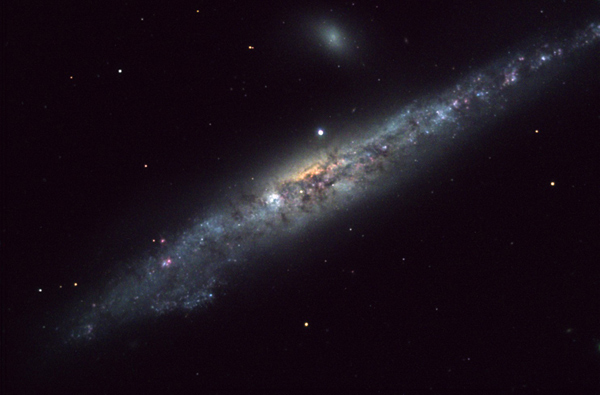Explain the mystery of missing stars in the universe
For more than half of a decade scientists have struggled to find out why the number of stars is less than what they expected.
Cause missing stars in the universe
For more than half of a decade scientists have struggled to find out why the number of stars is less than what they expected. The number of stars in the universe is not enough and astronomers now think that they may have known the reason why this situation occurred.
By using the Hubble Space Telescope , they discovered a distant galaxy where stars self-destruct to create materials for the formation of new stars in space at 2 million miles per hour, and slow down the process of replicating new stars. Astronomers believe that this discovery could explain why stars in the universe are less than expected.

Illustration
Astronomer Carl Sagan once said that the number of stars in the universe is more than the total number of grains of sand on all the beaches in the world combined. It is estimated that about 10 stars correspond to one grain of sand - or about one hundred thousand million million, or 100 sextillion (1 sextillion = 1,000 cumulative seven) stars. However, this huge number is not necessarily sufficient for modern astronomers.
Dr. James Geach of the University of Hertfordshire said: 'We know that in 10-15 years the current number of stars is not as much as we expected.'
Stars form when gas clouds pull together by gravity. However, according to computer simulations, this process always exceeds the number of stars that scientists can observe. Maybe more than 2, even 3 times the number of stars seen in the night sky. Geach and colleagues said they had discovered what astronomers had lost track of.
They have found a distant galaxy called a 10 billion light-year star, which is a star that is roughly 260 times faster than the Milky Way galaxy . Radiation cascades created by a newborn body release residual gas. When these raw materials are blown deep into space, the formation speed will slow and even be prevented.
' We are witnessing the strong end of forming a star,' Geach said. The more new stars are born, the more light pressure of stars is created, emitting more gas and preventing the speed of star formation.
This is the first time this process has been seen by star-forming activity . Usually it is associated with a black hole operating at the center of a galaxy. However, there is no evidence of such a black hole in this galaxy. The study is published in Nature.
In the nearby universe, many galaxies have completely stopped making stars.'Something has cleared gas from these galaxies,' said Philip Best, a professor of astronomy astronomy at the University of Edinburgh, but he did not participate in the study.
Not only are single stars able to be sucked in. Astronomers think that in the maximum shape, black holes can blow away small galaxies, which explains why there are fewer than 10 to 100 galaxies according to scientists' calculations.
Geach said according to the team's observations, published in Nature 'a new important clue in their understanding of galaxies' evolution.'
- The plane returned to mystery
- Discover the oldest stars in the universe?
- Discover the dark age of the universe
- 7 'timeless' cases do not have world famous solutions
- Decoding adds a mystery of the universe
- Dark Star - Gift from the Universe
- Decipher the mystery of dark matter
- Find places to produce stars in the universe
- See the path of the stars in the sky
- The 'vampires' hide in the universe
- Light from the first stars
- 9 interesting things about stars
 Van Allen's belt and evidence that the Apollo 11 mission to the Moon was myth
Van Allen's belt and evidence that the Apollo 11 mission to the Moon was myth The levels of civilization in the universe (Kardashev scale)
The levels of civilization in the universe (Kardashev scale) Today Mars, the sun and the Earth are aligned
Today Mars, the sun and the Earth are aligned The Amazon owner announced a secret plan to build a space base for thousands of people
The Amazon owner announced a secret plan to build a space base for thousands of people NASA discovers two stars colliding so violently that they created gold
NASA discovers two stars colliding so violently that they created gold  James Webb Telescope Discovers Massive Supercluster Hidden Deep in the Milky Way
James Webb Telescope Discovers Massive Supercluster Hidden Deep in the Milky Way  'Time travel' 13.5 billion years, NASA telescope finds 4 cosmic ancestors
'Time travel' 13.5 billion years, NASA telescope finds 4 cosmic ancestors  Why there are no stars in American photos of the Moon
Why there are no stars in American photos of the Moon  Aliens control the fastest moving stars in the galaxy?
Aliens control the fastest moving stars in the galaxy?  First 'hybrid' star and planet object revealed outside the Milky Way
First 'hybrid' star and planet object revealed outside the Milky Way 